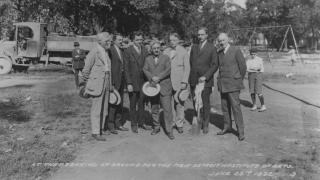
Lynn Perry Wooten has been studying the challenges women face in American workplaces for more than two decades. In that time, she’s seen a lot of change, but also many familiar themes. For example, Wooten argues the recent pandemic-prompted “she-cession,” where women, especially younger women and women of color, left the traditional workforce in historic numbers, represents both a new phenomenon and a crisis whose dynamics have been “smoldering” for years. “Even now, business is one of the top majors in the country and when you look at gender parity . . . and you look at entry levels in the corporate suite, 48% [are women], but by the time you get to the C-suite, we’re down to 24%. This is that ‘leaky pipeline.’ For management, we get to 41%. By VP, it’s 30%. So something is happening in addition to the she-cession in the corporate sector,” Wooten says.
Scholars who study the leaky pipeline — the phenomenon where gender (and racial) representation lag the higher you get in an organization’s hierarchy — have identified a huge range of contributing factors, including a childcare crisis and a suite of persistent systemic and structural challenges. But Wooten argues that there are also “best practices” that can guide women seeking leadership positions and organizations looking to cultivate women leaders. Those themes are the subject of her recently co-authored book “Arrive and Thrive: 7 Impactful Practices for Women Navigating Leadership.” During her Thought Leaders talk on the UM-Dearborn campus, Wooten discussed these practices, which bring together her and her colleagues’ research and advice from 24 women in top leadership positions.
Practice 1: Investing in your best self. Wooten argues you’ll put yourself in the best position to thrive if you have intimate knowledge of your strengths, values and what makes you joyful at work. Then, seek out or create workplace environments that allow these parts of your “best self” to thrive.
Practice 2: Embracing authenticity. In our workplaces, we often edit ourselves down to just the parts we think are work appropriate. Wooten says bringing your social identity, values and unique style to work is what makes you not like everybody else and can give you a “competitive advantage.”
Practice 3: Cultivating courage. Wooten says courage is rooted in introspection. It’s about knowing yourself, confronting your flaws, admitting you don’t know everything and using this to prepare for challenging situations. To do this, Wooten stresses that organizations need to cultivate supportive cultures that encourage innovative thinking and don't penalize people for taking productive risks.
Practice 4: Fostering resilience. Resilience fundamentally involves overcoming the fear, anxiety and selfishness that naturally accompany crisis situations. We can view moments of upheaval as opportunities to examine what skills we may need to develop to succeed in changing times.
Practice 5: Inspiring a bold vision. “Sadly … the research shows that women are not perceived as visionary. A man can say an idea in the room and we see it as brilliant. And when a woman says the same thing, it’s not seen as visionary. We wanted women to have tools to be visionary,” Wooten says. Among other things, this includes identifying what the world or organization needs, coming up with daring solutions and being able to communicate ideas in ways that resonate with people.
Practice 6: Creating a healthy team environment. Wooten says giving women opportunities to lead teams and projects early in their careers is crucial to fixing the leaky pipeline. Culture changes are important too. “Good teamwork is frequent and honest communication . . . it’s making time for the team to learn together, it’s appreciating the team, and it’s ensuring that when the team makes mistakes, the leader owns it, therefore it’s a psychologically safe culture.”
Practice 7: Committing to the work of the inclusive leader. Wooten argues doing the work of the inclusive leader starts with knowing your strengths, which leads to a knowledge of your biases. It’s also about embracing the value of equity and the idea that “everyone is not the same and everyone needs different things.” As a practical tool, she sees a lot of potential for “sponsoring” other people in the workplace. “In the African American community, there is a saying ‘lift as you climb.’ That is what sponsorship is about. It’s when someone else is not in the room, you’re elevating them. You’re looking to see, do we have fair representation across gender roles, and finally making that systems change.”
Missed the Thought Leader Series event and want to watch? Check out the recording.
###
Story by Lou Blouin





